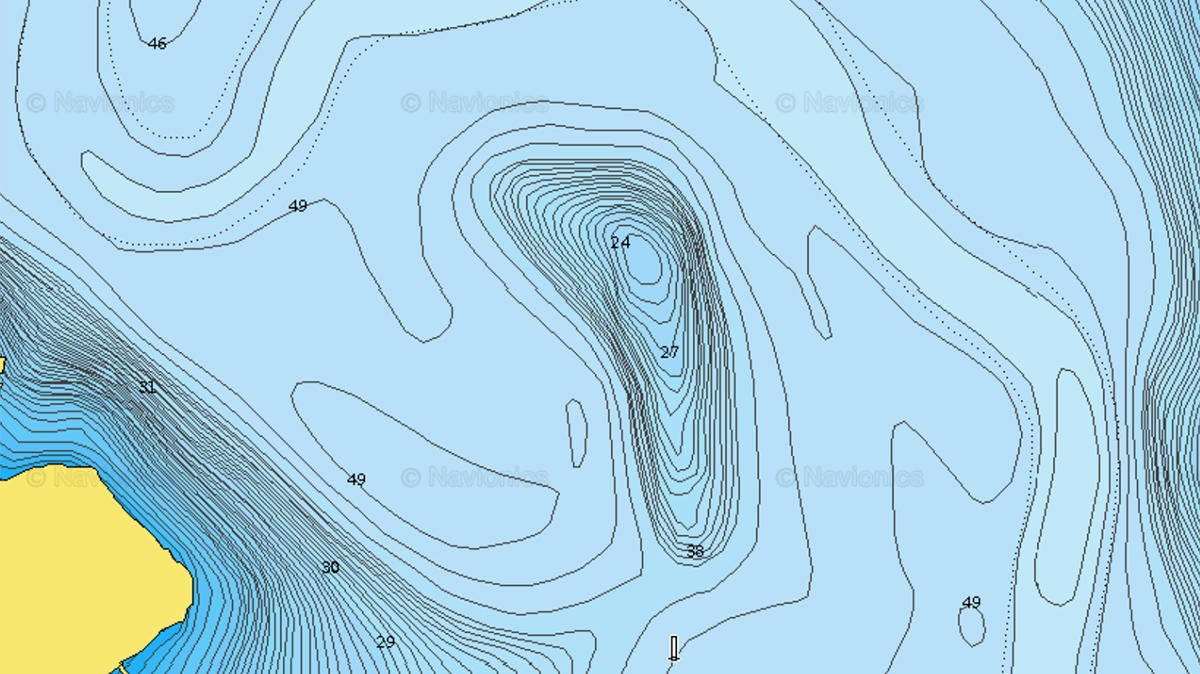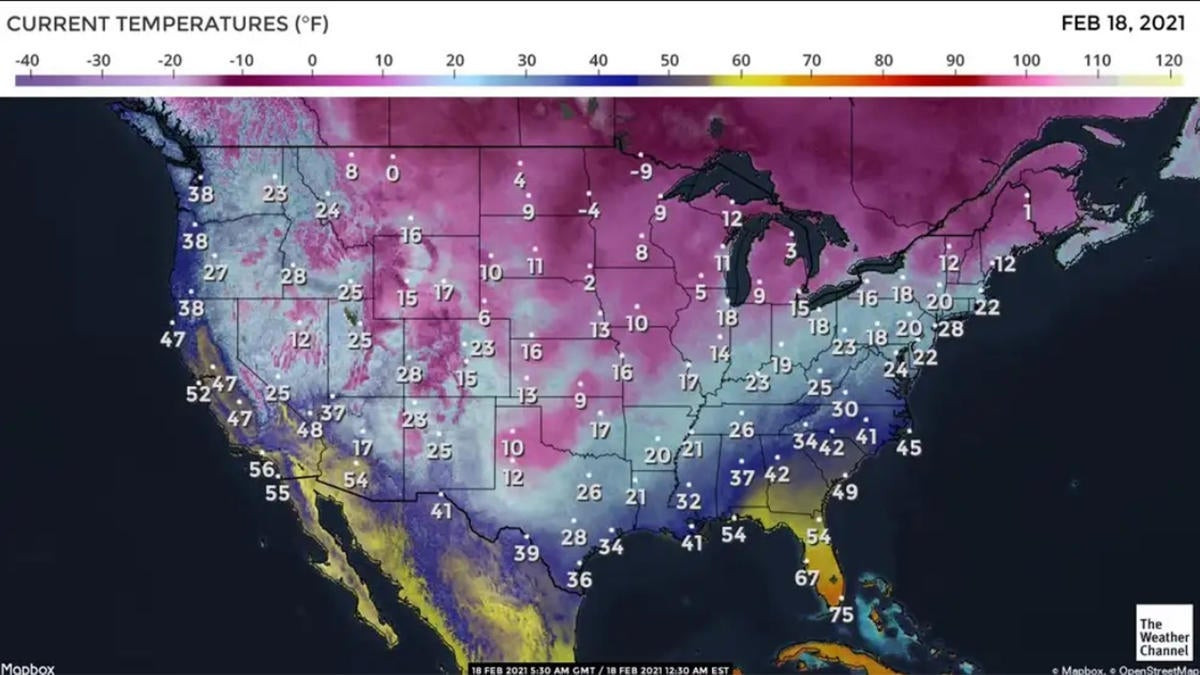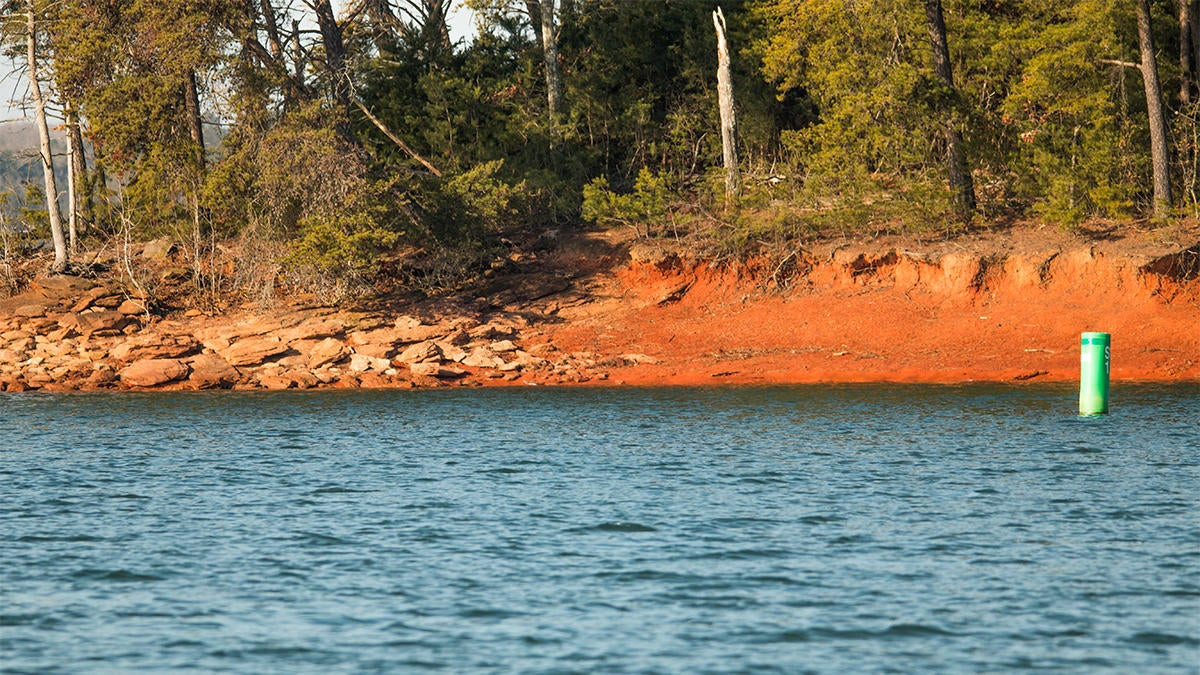Winter bass fishing is always a tough nut to crack for anglers; I think we can all agree on that. This recent weather, however, has made things pretty awful throughout most of the country and our prayers truly go out to the folks affected by these unprecedented conditions. Just when we thought we might see the proverbial light at the end of winter’s long and dark tunnel, many of us got smacked square in the mouth with some of the most frigid temperatures we’ve seen in over a decade.
For those whose lakes aren’t frozen, the fishing most likely stinks right now. Here in Georgia, we were teased with two 70-degree days and before we could blink, we’re in the 20s with endless rain dumping on us. The fish (and the fishermen) don’t know what to do right now. I’m sure lots of folks could say the same thing.
This got me thinking the other evening while I was in my shop. If someone wanted to get out and brave the cold temperatures and go bass fishing, what would I suggest they do? I’ve been out during one of these frigid days to get some pictures shot for the website and I’ve found a few things that might help you cure your cabin fever and stretch your line a little bit. Let’s dive into it and see what we come up with.

Offshore humps near river channels
It’s not always the most enjoyable way to bass fish, but if you can spend a little time studying just a paper map of your favorite lake, you’ll likely find some offshore humps that can pay big dividends in these nasty cold spells. If you have the fancy electronics on your boat, that’s great. But this is something, as I mentioned, that can be done with little to no technology.
Humps, as pictured above for reference, are very easy to find on basic contour maps. The large majority of lakes have dozens of prominent humps in them and they’re bass magnets throughout much of the year. Heck, they’re even striped bass, white bass and catfish magnets, too. If it swims in the lake, you’ll probably find it somewhere near a hump.
I tend to frequent these areas in particularly extreme weather, whether we’re talking 100-degree temperatures in July or 20-degree temperatures in February. Bass love to gang up on these humps and although I’m not the best offshore angler in the world (far from it, actually) it can be an absolute blast when you find ’em.
In my opinion, they’re great places to target right now because they allow the bass to change their living situation with very little effort or energy exerted. A bass can kick its tail a few times and within a couple seconds, move from 35 to 15 feet when or if a weather front comes through. Also, these offshore humps tend to act as dinner plates for the bass. They can sit on the down-current side of them and ambush prey as it’s washed over the hump. This requires very little work for bass and they’re also able to pin said prey against the face of the hump, which makes it easier to corral baitfish, which creates a more efficient feeding experience.
If, before this recent cold snap, you didn’t see any prespawn movement in the shallows, I’d suggest looking for humps near a river channel. Because bass often spend their winters in these deep channels, humps are going to be the first piece of structure they pass as they prepare to stage for the prespawn period. Imagine being on an interstate with your truck’s low fuel light on. You’re going to pull into the very first gas station you find and I believe winter bass do the same thing with these offshore humps.
Suggested baits: Spoons, blade baits and tail spinners tend to be the stars of the show whenever I’m fishing these areas. This cold weather has put the bass in a sour mood and shortened their already-small feeding windows, so you’ll want a lure with a subtle action. I fish a bunch of different blade baits and I haven’t been nuts about many of them lately, so I can’t really suggest anything specific there in good conscience. I will say, however, that a 7/8-ounce War Eagle Jiggin’ Spoon and a Mann’s Little George are awfully tough to beat in this situation. The War Eagle Jiggin’ Spoon comes with great hooks already on it but make sure you change the Little George’s hook before you drop it down.

Did you have a warm spell before the cold weather hit?
This is a situation a lot of the more southern states are dealing with right now. As I briefly mentioned earlier, the weather was flat-out gorgeous for several days before this arctic crap got here. Birds were chirping, a few flowers tried to bloom and heck, the geese were even starting to nest. Oddly enough, when the geese start to nest around here, you know the giant prespawners are going to be moving shallow.
So all of that happened and it seemed like spring was well on its way; I was rocking my shorts and flip flops and just loving life. Then the evil winter ninja kicked us in the face. So much for an early spring, right?
This has happened a few times in my area before and I’ve learned something fairly interesting in regards to catching bass. Once those prespawn females finally commit and move shallow, I’ll bet you my boat they won’t leave. You can throw a tornado or blizzard at ’em and those stubborn old girls are staying put. Once they make the move, they’re not going to swim all the way back out to the river channel when a cold front hits.
Do they become tougher to catch? Darn right, they do. But I want you to have confidence that you’re around fish. So if you got teased with a little spring weather before this nasty weather rolled in, don’t abandon your fish. You will still find some prespawners in six feet or water or less; I can guarantee that. But you’re going to have to work a little harder for them.
Likely areas to find these big females include shallow primary and secondary points and, oddly enough, the fronts of docks. Those bigguns like to get up under walkways when they first move up and start looking for potential spawning areas but a cold front will knock ’em back a little bit. They’ll often stay on that exact same dock but instead of being in two feet of water, they’ll go hang out on the front of the dock in six or eight feet of water. It’s almost like they somehow know that the cold front is temporary, so they want to hang close so they don’t waste all the energy of swimming back and forth. Nature is a weird and awesome thing, man.
Suggested baits: A flat-sided crankbait is nearly impossible to beat. You can certainly have some success with big spinnerbaits and ChatterBaits, but I prefer a crankbait because these fish seem to swat at the bait a lot. I’d much rather have a treble-hooked bait in that situation.

Target small stretches of main-lake rock for kickers
I feel like I write about the importance of wintertime rock ad nauseam. At the risk of sounding slightly repetitive, however, I’m going to bring it up again. I sincerely want you to understand how powerful this type of cover is when it’s cold and miserable outside. Bass are cold-blooded critters which means their body temperature is regulated by the water temperature. Although you and I couldn’t tell the difference if we jumped in the lake, just a two- or three-degree difference is an enormous deal for a bass. That’s why, especially during historically cold weather, they tend to snug up to cover that conducts and retains heat for long periods of time.
The best example of such cover is rock; I don’t care if it’s boulders, chunk rock, rip rap or gravel on a 45-degree bank. Winter bass love rock and they become even more infatuated with it during these cold spells.
When I first started experimenting with this pattern during 20-degree weather, I thought I had to find long stretches of rock in order for them to be “worth my time” to stop and fish. As I’ve matured as an angler, I’ve realized that I probably wasted a lot of great opportunities due to that mindset. In all honesty, I think I was being lazy. Why take the boat off pad, unstrap the rods and drop the trolling motor just to fish a 10-yard stretch of rock?
Well, I’ll tell you why. It’s because these small stretches play host to some of the biggest winter bass you’ll find. It just took my stubborn, redneck butt a few years to finally come to that realization.
These small stretches seem to concentrate the fish better than, say, a 100-yard stretch of riprap would. When there’s so much continuous cover in an area, I think there are just too many hiding places for a bass. If you put a 10-yard stretch of riprap on a main-lake seawall on an otherwise featureless bank, however, every big female in that immediate area is going to be attracted to it. It’s the difference between us setting our houses’ thermostats at 70 degrees compared to 80 degrees. It’s a huge difference if a bass can find an isolated stretch of rock and raise its body temperature a degree or two.
Now, there’s a reason I mentioned the main lake in this subheading. Can you go catch some big bass in a pocket somewhere right now by targeting rock? I’m absolutely positive you could. But to have those special 25-pound days we all dream about, I personally believe your best chance at multiple kickers comes from the main lake area during a historic cold spell. Bass right now are crazy about some sort of verticality. Is that an official word in the dictionary? Heck, I don’t know. But that’s what I’m going to call it, by gosh.
I think they still want some sort of adjacent deep water, especially if they didn’t move up to stage before the cold came through. For the same reasons we discussed with the offshore humps, a steeper bank on the main lake offers these prespawners an easy and energy-efficient way to adjust their situations. When you combine isolated stretches of rock with adjacent deep water, it’s just a matter of time until you run across a 6- to 8-pound bass.

Final thoughts
I don’t know what to say about all of this crazy weather. I complain about 20-degree temperatures but heck, I think the temperature was like 20 degrees below zero for the guys in our Minnesota office this past week. I believe I’d pass away if I had to deal with weather like that.
For those of you who have soft water right now, if you can safely make it to the boat ramp, don’t be afraid to dump the boat in and grind out a few bites. It’s not going to be comfortable and you’re probably not going to catch dozens of bass but the big girls will still bite. You just won’t be able to catch ’em from the warmth of your house.












